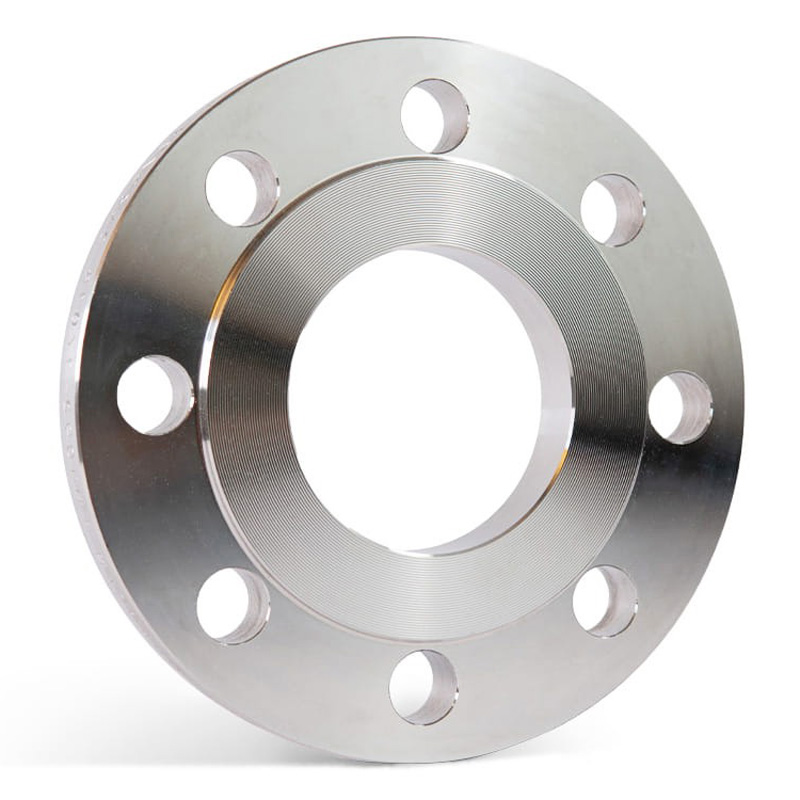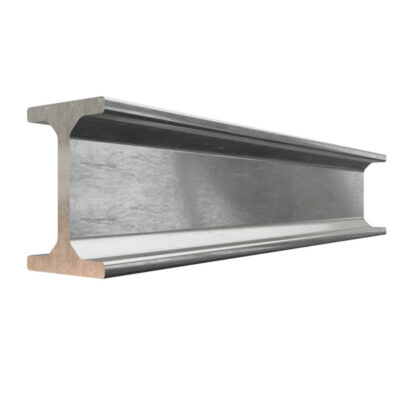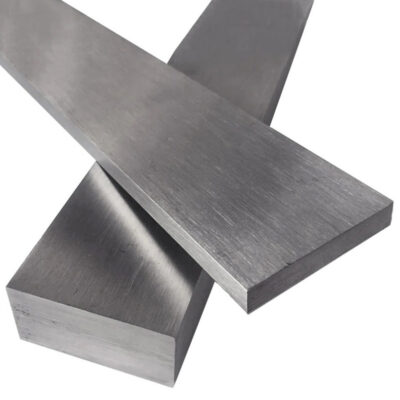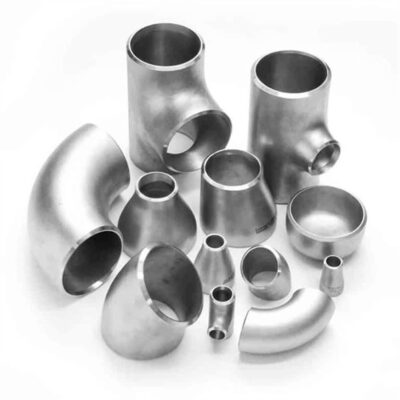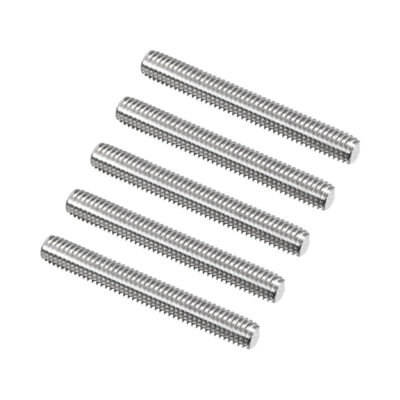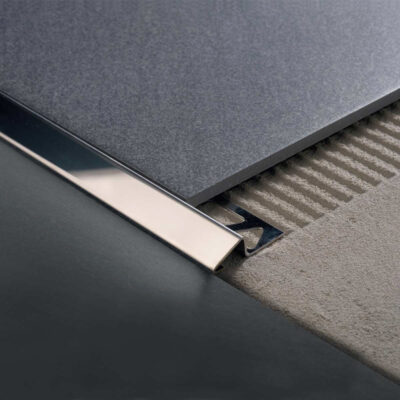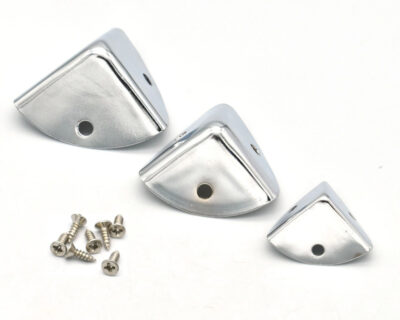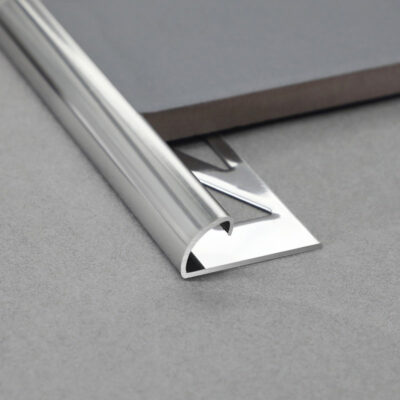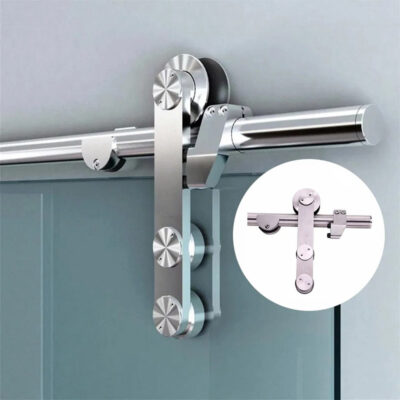Understanding Stainless Steel Flanges: Essential Components in Industrial Systems
The unassuming stainless steel flange rarely gets the attention it deserves. During a recent plant inspection at a petrochemical facility, I observed how these critical connection points were withstanding pressures exceeding 1500 psi while exposed to highly corrosive chemicals. What struck me wasn’t just their durability, but the engineering precision they embodied—each fastener torqued to exact specifications, every sealing surface flawlessly machined.
Stainless steel flanges function as the critical joining elements in piping systems, allowing connections between pipes, valves, pumps, and other equipment. Unlike ordinary pipe fittings, flanges create connections that can be disassembled for maintenance, inspection, or replacement without destroying the piping system. The use of stainless steel for these components introduces significant advantages in corrosion resistance, temperature tolerance, and longevity—particularly in demanding industrial environments.
In industries ranging from oil and gas to food processing, chemical manufacturing to pharmaceutical production, these components play an essential role in maintaining system integrity. Their selection impacts not only immediate performance but long-term operational costs, safety parameters, and maintenance requirements. The global market for stainless steel flanges continues to expand, with recent industry reports indicating growth rates exceeding 5.8% annually through 2028.
What makes stainless steel flanges particularly valuable is their remarkable combination of mechanical strength and corrosion resistance. The chromium content (typically 16-26%) creates a passive oxide layer that shields the metal from aggressive environments. This self-healing protective barrier regenerates when damaged, providing ongoing protection even in challenging conditions.
Types and Classifications: Navigating the Variety of Stainless Steel Flanges
Stainless steel flanges come in numerous configurations, each designed for specific applications and operating conditions. Understanding these variations helps engineers and procurement specialists make informed decisions for their systems.
The most common types include:
Weld Neck Flanges: These feature a long tapered hub that transitions into the pipe wall thickness. The gradual transition distributes stress and reduces concentrated loading at the flange-pipe junction. I’ve found these particularly effective in high-pressure, high-temperature applications where system integrity is critical. During a recent refinery project, we selected weld neck flanges specifically for the main steam lines where temperatures exceeded 540°C.
Slip-On Flanges: With a slightly larger bore than the pipe outside diameter, these flanges slip over the pipe and are welded both internally and externally. They’re typically less expensive than weld neck varieties but offer slightly lower pressure ratings. Installation is generally simpler, making them popular for moderate service conditions.
Blind Flanges: Used to seal the ends of piping systems, these solid discs provide complete closure and are commonly used for future expansion points or temporary closures during system testing. In my experience, proper gasket selection becomes particularly critical with blind flanges, as they often serve as terminal points for pressure testing.
Socket Weld Flanges: Featuring a socket that accepts the pipe, these flanges are welded only at the exterior. They’re commonly used in smaller diameter, high-pressure applications where threaded connections would be unsuitable.
Lap Joint Flanges: Used with stub ends, these two-piece arrangements allow for rotation during installation and are frequently specified for systems requiring frequent disassembly or where exotic alloys are needed only for the wetted surfaces.
Threaded Flanges: These contain internal threads that mate directly with threaded pipe, eliminating welding requirements. While convenient for certain applications, their pressure limitations and potential for leakage restrict their use in critical systems.
Beyond physical configuration, stainless steel flanges are classified according to:
Pressure Class: Ranging from 150# to 2500# in ASME standards, pressure class defines the pressure-temperature relationship for safe operation. A 300# flange, for instance, has different maximum allowable working pressures at various temperatures.
Facing Type: The surface against which the gasket seats comes in several styles, including:
- Raised Face (RF): The most common type, with a raised surface around the bore
- Flat Face (FF): Used primarily with non-metallic piping
- Ring Type Joint (RTJ): Featuring a groove for metallic ring gaskets, designed for high-pressure applications
- Tongue and Groove: Providing precise alignment and gasket retention
Material Grade: Stainless steel flanges are manufactured from various alloys, each with specific properties:
| Grade | Composition | Corrosion Resistance | Typical Applications |
|---|---|---|---|
| 304/304L | 18% Cr, 8% Ni | Good general resistance | General purpose, food processing |
| 316/316L | 16% Cr, 10% Ni, 2% Mo | Superior resistance to chlorides | Chemical processing, marine environments |
| 321 | 18% Cr, 10% Ni, Ti stabilized | Good at elevated temperatures | High-temperature applications |
| Duplex (2205) | 22% Cr, 5% Ni, 3% Mo | Excellent resistance, higher strength | Offshore, chemical processing |
| Super Duplex | 25% Cr, 7% Ni, 4% Mo | Outstanding resistance, very high strength | Severe environments, seawater applications |
During a recent project for a coastal desalination plant, we selected Super Duplex flanges despite their higher cost. The decision paid off when inspections after five years showed virtually no degradation, while carbon steel components in less critical areas already showed significant corrosion issues.
Manufacturing Processes and Quality Standards
The performance of stainless steel flanges depends heavily on their manufacturing process and adherence to industry standards. Three primary methods are employed in flange production:
Forging: The preferred method for critical applications, forging involves heating the material to a plastic state and forming it under pressure. This process aligns the grain structure of the metal, enhancing strength and durability. Forged flanges typically demonstrate superior mechanical properties and resistance to fatigue.
Casting: Some flanges are produced through casting, where molten metal is poured into molds. While generally less expensive, cast flanges may contain internal voids or inconsistencies. Advanced techniques like centrifugal casting have improved quality, but forged options remain preferred for critical services.
Plate Fabrication: Certain flanges, particularly larger sizes or special configurations, are fabricated from plate material. This involves cutting, forming, drilling, and welding operations. While versatile, plate fabrication requires careful quality control to ensure proper material properties.
The manufacturing process must comply with international standards that govern dimensions, tolerances, testing requirements, and material specifications. Key standards include:
- ASME B16.5: Covering pipe flanges and flanged fittings in sizes NPS ½ through NPS 24
- ASME B16.47: Addressing large diameter flanges from NPS 26 through NPS 60
- DIN standards (particularly DIN 2633, 2634, and 2635): European standards for flange specifications
- JIS B2220: Japanese Industrial Standard for steel pipe flanges
As Dr. Harish Patel, metallurgical engineering professor at Imperial College London, explained during a recent industry conference: “The microstructure developed during manufacturing directly influences a flange’s performance under load. Properly forged stainless steel flanges exhibit a fine, uniform grain structure that provides optimal resistance to both mechanical stress and corrosion mechanisms.”
Quality assurance procedures typically include:
- Chemical composition verification
- Mechanical property testing (yield strength, tensile strength, hardness)
- Dimensional inspection
- Non-destructive examination (ultrasonic, magnetic particle, liquid penetrant)
- Pressure testing
- Material traceability documentation
- Surface finish verification
When I visited a leading flange manufacturer in Italy last year, I was impressed by their implementation of automated ultrasonic testing systems that could detect subsurface flaws as small as 0.5mm. Their rejection rate was under 0.8%, testament to their process control. The quality manager emphasized, “We’re not just meeting specifications—we’re building components that protect lives and environments.”
Selection Criteria for Industrial Applications
Choosing the appropriate stainless steel flange involves balancing multiple factors to achieve optimal performance, safety, and cost-effectiveness. The selection process should consider:
Pressure-Temperature Ratings: Every flange carries specific pressure limitations that vary with temperature. As temperatures increase, the maximum allowable working pressure (MAWP) decreases due to reduced material strength. Engineers must analyze both normal operating conditions and potential upset scenarios.
Corrosion Considerations: Perhaps the most complex aspect of flange selection involves matching the material grade to the specific corrosive conditions. This requires understanding:
- Process fluid composition (particularly chlorides, acids, caustics)
- External environmental factors (marine atmospheres, industrial pollutants)
- Operating temperature (which affects corrosion rates)
- Flow conditions (erosion-corrosion potential)
- Potential for galvanic coupling
Media Compatibility: Beyond general corrosion, specific process media may cause specialized forms of attack:
| Media Type | Recommended Grade | Considerations |
|---|---|---|
| Seawater | 316L, Duplex, Super Duplex | Chloride content, biofouling potential |
| Strong Acids | 316L, Alloy 20, Hastelloy | Concentration, temperature, presence of oxidizers |
| Caustic Solutions | 304L, 316L | Concentration limits, stress cracking potential |
| Steam Systems | 304, 321, 347 | Temperature, potential for condensate |
| Food Products | 304, 316L | Sanitization chemicals, cleaning protocols |
Mechanical Requirements: Beyond pressure containment, flanges must withstand:
- Bending moments from piping misalignment
- Thermal expansion and contraction cycles
- Vibration from equipment
- External loads from connected components
- Potential water hammer or pressure spikes
Economic Factors: While initial material cost is important, lifecycle considerations often prove more significant:
- Installation costs (equipment, labor, welding requirements)
- Maintenance frequency and complexity
- Downtime costs associated with failure
- Replacement availability and lead times
During a chemical plant expansion project I consulted on, the team initially specified 304 stainless flanges based on capital cost constraints. After reviewing the process chemistry, which included trace amounts of chlorides at elevated temperatures, we upgraded to 316L for critical sections. The decision increased initial costs by approximately 18%, but avoided a potential catastrophic failure that would have resulted in weeks of lost production.
Installation Best Practices and Maintenance
Even the highest quality stainless steel flanges can fail prematurely if improperly installed or maintained. Proper installation requires:
Surface Preparation: Flange facing surfaces must be clean, undamaged, and free from scratches or imperfections that could compromise gasket sealing. Protective coverings should remain in place until just before assembly.
Gasket Selection and Installation: The gasket material must be compatible with both the process media and the flange facing style. Proper alignment is critical—gaskets should be centered and never protrude into the flow path.
Bolt Selection and Lubrication: Fasteners must meet or exceed the pressure rating of the flanges and possess suitable corrosion resistance. Threads should be lubricated with appropriate compounds that won’t contaminate the system.
Controlled Tightening Sequence: Perhaps the most critical aspect of flange assembly is the tightening pattern. Using a calibrated torque wrench, bolts must be tightened in a specific cross-pattern sequence, typically:
- Hand-tightening all bolts
- Tightening to 30% of target torque in sequence
- Advancing to 60% of target torque
- Final tightening to 100% of specified torque
- Verification round checking all fasteners
This methodical approach ensures even gasket compression and prevents flange distortion. During a recent offshore platform project, we implemented ultrasonic bolt tensioning methods that allowed even more precise loading control than traditional torque wrenching.
Maintenance Considerations:
Stainless steel flanges generally require less maintenance than carbon steel equivalents, but regular inspection remains important:
- Visual inspection for signs of leakage or corrosion
- Checking for loose fasteners or improper alignment
- Examination of gaskets during planned shutdowns
- Cleaning of external surfaces to remove contaminants
- Replacement of fasteners showing signs of deterioration
As maintenance supervisor James Howell shared from his 25 years working in petrochemical facilities: “The flanges people forget about are the ones that cause midnight emergency calls. We now incorporate flange inspection into our regular rounds, looking for the early warning signs—slight discoloration around gaskets, crusty deposits, or any evidence of weeping.”
When disassembling flanged connections during maintenance, proper documentation of the original condition helps ensure proper reassembly. Photographs, measurements of bolt extension, and notes on gasket condition provide valuable reference information.
Advanced Applications in Critical Industries
Different industries place unique demands on stainless steel flanges, requiring specialized knowledge for optimal selection:
Oil and Gas Applications: In upstream operations, flanges encounter everything from highly corrosive production fluids to abrasive sand. Downstream processing adds high-temperature services and potential hydrogen attack concerns. Common specifications include:
- NACE MR0175/ISO 15156 compliance for sour service
- Fire-safe designs for hazardous areas
- Extended-life requirements for subsea applications
- Special facing requirements for high-pressure metal-to-metal seals
Chemical Processing: Perhaps the most demanding service environment, chemical production facilities require flanges that withstand:
- Highly aggressive media (acids, caustics, oxidizers)
- Frequent thermal cycling as batch processes change
- Potential for stress corrosion cracking
- Requirements for ultra-high purity in certain processes
The chemical manufacturing sector frequently utilizes specialty alloys beyond standard stainless grades. As chemical process engineer Dr. Sarah Chen notes, “We’ve moved from thinking about whether a flange will fail to analyzing when it might fail. This predictive approach allows us to schedule replacements during planned outages rather than experiencing catastrophic mid-run failures.”
Pharmaceutical and Food Processing: These industries face unique challenges regarding cleanliness and regulatory compliance:
- Surface finish requirements (typically 32 Ra or better)
- Crevice-free designs to prevent product entrapment
- Materials certifications for FDA compliance
- Specialized gaskets that maintain product purity
- CIP/SIP (clean-in-place/steam-in-place) compatibility
For a recent pharmaceutical project, we selected specialized 316L flanges with enhanced surface finishes and electro-polishing. The additional treatment created an exceptionally smooth, passive surface that prevented product adhesion and simplified cleaning protocols.
Power Generation: Whether in traditional fossil plants, nuclear facilities, or renewable energy applications, power industry flanges face:
- Extreme temperature services (superheated steam systems)
- Potential for flow-accelerated corrosion
- Rigorous quality documentation requirements
- Strict dimensional tolerances for critical systems
Table: Specialized Flange Considerations by Industry
| Industry | Key Requirements | Common Material Selections |
|---|---|---|
| Oil & Gas | Sour service resistance, fire safety, erosion resistance | 316L, Duplex, Super Duplex, Inconel |
| Chemical | Corrosion resistance, process compatibility, longevity | 316L, Alloy 20, Hastelloy, Titanium |
| Pharmaceutical | Cleanliness, smooth finish, documentation | Electro-polished 316L, specialized grades with certification |
| Food Processing | Sanitary design, CIP compatibility, regulatory compliance | 304L, 316L with specific surface treatments |
| Power | Temperature resistance, precise dimensions, code compliance | F304H, F316H, specialized grades with ASME certification |
Future Trends and Innovations
The world of stainless steel flanges continues to evolve with advances in materials science, manufacturing technology, and digital integration:
Advanced Materials: Traditional austenitic grades like 304 and 316 are being supplemented by:
- Lean duplex grades offering improved strength with reduced nickel content
- Super austenitic alloys with enhanced resistance to localized corrosion
- Precipitation-hardened stainless steels combining strength and corrosion resistance
- Hybrid designs using bimetallic technology to optimize cost and performance
Manufacturing Innovations:
Hot isostatic pressing (HIP) technology is revolutionizing how some specialty flanges are produced. This process applies heat and pressure simultaneously to create components with near-perfect density and exceptional dimensional accuracy. While currently limited to specialized applications due to cost, HIP-produced flanges demonstrate superior fatigue resistance and performance in extreme environments.
Additive manufacturing (3D printing) technologies are beginning to impact the flange industry as well. While not yet widely adopted for standard products, these techniques allow:
- Rapid prototyping of new designs
- Production of complex geometries previously impossible to manufacture
- Potential for on-site or on-demand manufacturing in remote locations
- Material optimization through topological design
Sustainability Considerations:
Manufacturers are increasingly focusing on sustainability through:
- Improved material utilization and scrap reduction
- Energy-efficient manufacturing processes
- Extended service life designs reducing replacement frequency
- Enhanced recyclability at end-of-life
- Reduced nickel content alloys decreasing environmental impact
Digital Integration:
Perhaps most intriguing is the emergence of “smart flanges” incorporating:
- Embedded sensors monitoring temperature and strain
- Leak detection capabilities through integrated monitoring
- Real-time torque verification during installation
- Digital material traceability from manufacturing through installation
“The future flange won’t just be a connection point—it will be an information node in the industrial internet of things,” explains Rajiv Sankar, director of digital innovation at a leading manufacturing technology company. “Imagine receiving an alert on your maintenance dashboard when a specific flange experiences conditions outside design parameters, allowing intervention before failure occurs.”
Final Considerations and Recommendations
Selecting and implementing stainless steel flanges requires balancing multiple factors including pressure rating, corrosion resistance, mechanical properties, and economic considerations. Through years of field experience and expert consultation, several core principles emerge:
First, resist the temptation to underspecify based solely on initial cost. The most expensive flange is invariably the one that fails prematurely. A thorough analysis of operating conditions and potential upset scenarios provides the foundation for proper selection.
Second, recognize that material selection involves trade-offs. While higher-alloyed materials offer enhanced corrosion resistance, they may present challenges in terms of availability, fabrication requirements, and cost. The optimal choice balances performance requirements against practical constraints.
Third, never underestimate the importance of proper installation. Even the most perfectly specified flange will fail if improperly installed. Comprehensive procedures, trained personnel, and appropriate tools are essential investments.
For organizations beginning flange selection projects, consider these practical steps:
- Document the full range of operating conditions, including normal, startup, shutdown, and upset scenarios
- Consult materials engineers with specific experience in your industry
- Review historical performance data from similar applications
- Consider maintainability and accessibility during design
- Develop comprehensive material specifications beyond simple grade designations
- Implement rigorous quality control and documentation processes
The humble flange may not capture the imagination like more complex components, but its proper selection and implementation remain critical to system integrity. As one veteran engineer remarked during a failure analysis I participated in, “When everything goes right, nobody notices the flanges. When something goes wrong, they become the most important components in the entire system.”
Through careful selection, quality procurement, proper installation, and regular maintenance, stainless steel flanges will continue to serve as the reliable connectors that enable our industrial infrastructure to function safely and efficiently for decades to come.
Frequently Asked Questions about Stainless Steel Flanges
**Q: *What are Stainless Steel Flanges and how are they used in piping systems?*
A: Stainless steel flanges are circular discs or rings used to connect pipes, valves, pumps, and other equipment in piping systems. They are bolted together with a gasket in between to create a leak-proof seal. Their high corrosion resistance, strength, and durability make them a preferred choice for various industrial applications, including oil and gas, water treatment, and chemical processing.
**Q: *What are the common types of Stainless Steel Flanges?*
A: There are several types of stainless steel flanges, each serving a specific purpose. The most common types include:
- Weld Neck Flanges: Used for high-pressure systems due to their robust connections.
- Slip-On Flanges: Suitable for low-pressure applications and easy installation.
- Blind Flanges: Used to seal off pipe ends for maintenance.
- Socket Weld Flanges: Ideal for high-pressure systems with reduced risk of leaks.
- Threaded Flanges: For non-welded applications where ease of installation is required.
**Q: *What makes Stainless Steel Flanges better than other materials?*
A: Stainless steel flanges offer excellent corrosion resistance and durability, making them superior to other materials like carbon steel in harsh environments. Their ability to withstand high temperatures and pressures also makes them ideal for demanding applications. Additionally, stainless steel flanges are more resistant to chemical attacks compared to carbon steel, which is often limited without protective coatings.
**Q: *How are Stainless Steel Flanges chosen for specific applications?*
A: Choosing the right stainless steel flanges involves considering several factors:
- Application Environment: The type of fluid and environmental conditions (e.g., chloride concentration) influence the choice of stainless steel grade.
- Operational Pressure and Temperature: Important for selecting the correct pressure class.
- Installation and Maintenance Needs: Flange types like lap joint flanges ease alignment and disassembly.
- Material Specifications: Compliance with industry standards ensures safety and performance.
**Q: *What do the grades 304 and 316 refer to in Stainless Steel Flanges?*
A: The grades 304 and 316 are two of the most commonly used materials for stainless steel flanges. 304 Stainless Steel is versatile but limited in highly corrosive environments. 316 Stainless Steel offers better resistance to pitting corrosion and is preferred in marine and high chloride concentration settings. The “L” in 304L and 316L indicates lower carbon content, improving weldability and reducing carbide precipitation during welding.

